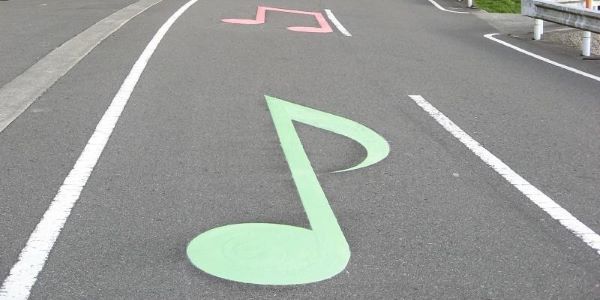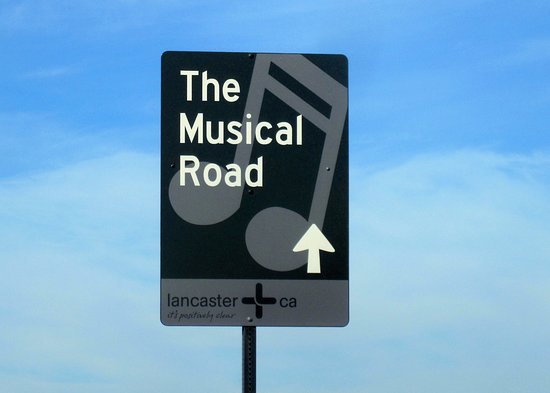A musical road is a road, or section of a road, which when driven over causes a tactile vibration and audible rumbling that can be felt through the wheels and body of the vehicle. This rumbling is heard within the car as well as the surrounding area, in the form of a musical tune.
Musical roads are known to currently exist in Denmark, Hungary, Japan, South Korea, the United States, China, Iran, Taiwan, and Indonesia. In the past, they could be found in France and the Netherlands as well.
Each note is produced by varying the spacing of strips in, or on, the road. For example, an E note requires a frequency of around 330 vibrations a second. Therefore strips 2.4 in (61 mm) apart will produce an E note in a vehicle travelling at 45 mph (72 km/h). To read more visit Atlas Obsura



